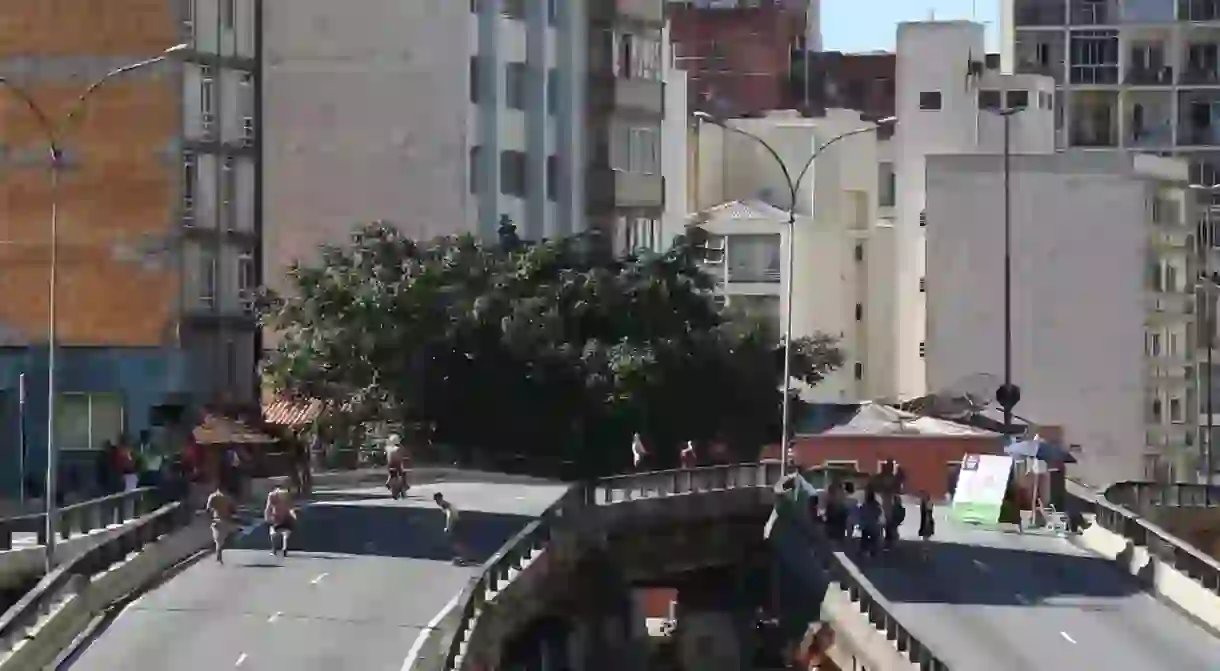History of the Minhocão in 60 Seconds

Snaking through the center of Sao Paulo is the Elevado Presidente João Goulart, an elevated concrete expressway linking Praça Roosevelt to the Perdizes neighborhood. Commonly referred to as the “Minhocão” (“Big Worm”), it has recently gone from being one of the city’s biggest eyesores to one of Paulistanos‘ favorite parts of town.
During the first few years of Brazil’s military dictatorship, the Minhocão project was put in place by then-Mayor Paulo Maluf to reduce roads congestion in the city center, which could not be widened due to building restrictions. While the Minhocão design did offer a faster route across town, it was widely criticized for a few reasons. First, it was built so close to nearby apartment buildings that some windows only 15 feet away from the expressway, causing constant noise and air pollution. Second, the Minhocão’s position directly above the center’s most important avenues—São João, General Olímpio da Silveira, and Amaral Gurgel—meant the roads below were plunged into almost constant darkness. As Sao Paulo’s city center fell into decay, these roads became hot spots for drug addiction, prostitution, and crime.
Reclaiming The Big Worm
As Sao Paulo’s city center underwent a revitalization process in the new millennium, people’s perceptions of the Minhocão also began to change. Though it was still the noisy, polluted, and much-maligned monster throughout the week, on Sundays and holidays, it gradually became one of the most interesting places to visit in the city.
Since its opening, the municipal government ordered the structure to be closed every Sunday out of consideration for the residents in surrounding areas, but it was only recently that, as part of a movement to reclaim public urban spaces, the Minhocão has been transformed into a place of leisure every Sunday.
Filled with cyclists, joggers, and dog-walkers, the Minhocão quickly became an extension of Sao Paulo’s public space, and nowadays has families having picnics, teenagers hanging out and listening to music, and couples taking romantic walks in the middle of what is usually one of the city’s busiest roads.
What’s next?
Many different opinions of what should be done with the Minhocão are being voiced, but everyone agrees on one thing: polluted traffic during the week must go. A somewhat popular idea is for the expressway to be demolished, an incredibly costly plan that would rob the locals of the pleasure of strolling on the empty Minhocão every week. Alternatively, it’s been suggested for the expressway to converted into the Parque Minhocão, an elevated linear park (much like the High Line in New York City). If approved, this plan would open Minhocão to pedestrians for the entire weekend and during school holidays, and the road would be permanently closed to traffic after four years.













